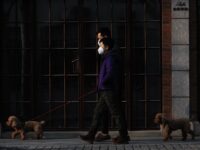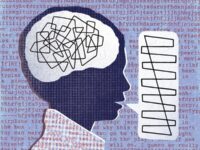For thousands of years, philosophers and religions have tried to find hidden meaning in the trials and tribulations of human life. From Greek antiquity and early Hindu texts to Nietzsche and Schopenhauer, we have striven to answer this question: does our suffering have meaning? Many religions and schools of thought hold that hardships are necessary for personal development or that “everything happens for a reason.” Although these ideas may sound like banal platitudes, more recently, a body of scientific literature has emerged focusing on the concept of post-traumatic growth (PTG), a phenomenon of psychological resilience experienced by some survivors of trauma.
From Greek antiquity and early Hindu texts to Nietzsche and Schopenhauer, we have striven to answer this question: does our suffering have meaning?
Most of us are familiar with post-traumatic stress disorder (PTSD). It has been documented in military veterans, natural disaster survivors, victims of violence, and even women who suffered traumatic childbirths. Exposure to the stressful event may cause an acute adrenaline response, commonly known as “fight or flight,” that can trigger the formation of neural pathways in the brain that persist after the threat has passed. The firing of this stress-response circuitry then is triggered causing heightened responses to non-threatening situations and thoughts. Neural imaging paradigms conducted on PTSD patients have shown changes in activity in the frontal lobe, anterior cingulate cortex, and thalamic regions, which collectively play key roles in executive function, attention, cognition, memory, and integration. Dysfunction in these areas leads to the behavioral and psychological disruptions experienced by PTSD patients. Psychotherapeutic and pharmacological treatments exist for PTSD, but the condition cannot always be effectively resolved. However, not all trauma survivors experience PTSD, and most experience no long-term negative psychological effects. Some survivors, however, can positively accommodate the stressful experience and integrate it with their prior beliefs in a manner that fosters psychological development in the aftermath of trauma. This phenomenon, in stark contrast to PTSD, is known as post-traumatic growth.
The positive assimilation of the stressful information with existing core beliefs drives the patient to a sort of homeostasis in their perception of their new reality.
Research in the last few decades has elucidated the idea that trauma need not be exclusively pathogenic — appropriate interventions could contribute to the development of its salutogenic effects and give rise to post-traumatic growth in trauma-exposed individuals. PTG is a product of the individual’s struggle to come to terms with their traumatic experience, and it is not mutually exclusive with post-traumatic stress. An individual may constructively process their trauma while still exhibiting symptoms of stress; however, over time, the positive assimilation of the stressful information with existing core beliefs drives the patient to a sort of homeostasis in their perception of their new reality. The five key domains that help identify PTG are personal strength, interpersonal relationships, life possibilities, appreciation for life, and spiritual/philosophical changes. These factors are measured by the patient’s endorsement in the Posttraumatic Growth Inventory assessment, commonly used by psychologists to evaluate whether positive adaptation is observed in a survivor of trauma.
PTG has been documented in survivors of a range of traumatic experiences. Research conducted on frontline nurses in China during the COVID-19 pandemic measured moderate to high levels of PTG in these health professionals, who faced extremely high stress working environments. The factors correlated with increased psychological growth were level of experience, self-confidence, psychological interventions, risk awareness, and deliberate rumination on the stressors. Rumination, or the turning over of information in one’s mind, has been identified as a key facet of recovery and growth following trauma. For an individual to come to terms with and accommodate their experiences positively, they must be able to mentally immerse themselves in the recollection of the trauma and subsequent emotions. Consequently, the opposite, avoidance, is a key indicator of PTSD in trauma survivors. Another recent study published by a team at Massachusetts General Hospital found that most women studied endorsed psychological growth — with the highest ratings of appreciation for life occurring in those who experienced a stressful birth — supporting the idea that serious adversity can bolster psychological strength and wellbeing.
For an individual to come to terms with and accommodate their experiences positively, they must be able to mentally immerse themselves in the recollection of the trauma and subsequent emotions.
Perhaps what doesn’t kill you does make you stronger, psychologically at least. The two diverging trajectories of psychological wellness in the aftermath of trauma begs the question, what differences lead one trauma survivor down the road to recovery and resilience and another down a path to psychological pathology? As research into this dichotomous area of human psychology progresses, researchers hope to develop interventions and supports that help more trauma survivors achieve psychological resilience and growth. So, to answer the age-old question, it seems suffering can hold meaning. We just have to help people find it and turn tragedy into psychological triumph.
Personality and Individual Differences (2012). DOI: 10.1016/j.paid.2012.01.011
Psychiatriki (2020). DOI: 10.22365/jpsych.2020.312.162. PMID: 32840220
Archives of Women’s Mental Health (2021). DOI: 10.1007/s00737-020-01053-9
Journal of Occupational and Environmental Medicine (2021). DOI: 10.1136/oemed-2020-106540
Journal of Adolescent and Young Adult Oncology (2018). DOI: 10.1089/jayao.2017.0040






